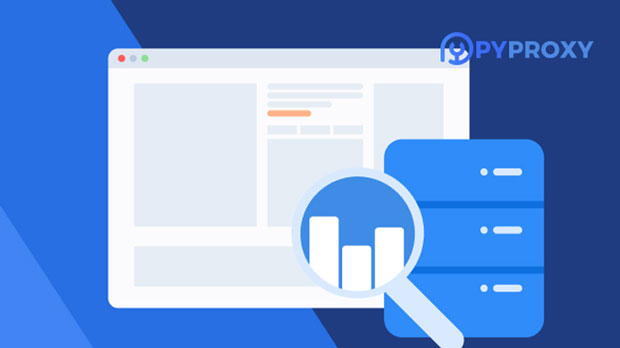In today’s digital world, online privacy is an increasingly critical concern for many users. With numerous threats like surveillance, hacking, and data tracking, protecting your online activity is more important than ever. One effective way to enhance your privacy while browsing the web is by using a socks5 proxy. Unlike traditional proxies, SOCKS5 offers advanced features that not only help mask your IP address but also improve your browsing speed and security. This article will explore how SOCKS5 works, its advantages for Windows users, and how to set it up to safeguard your online privacy. What is SOCKS5 and How Does it Work?Before diving into the steps of configuring SOCKS5 on Windows, it's important to understand what SOCKS5 is and how it differs from other proxy protocols. SOCKS stands for "Socket Secure," and the number 5 refers to the fifth version of the protocol, which is the latest and most secure iteration.SOCKS5 is a versatile proxy protocol that facilitates the routing of internet traffic through an intermediary server. This server acts as a middleman between your device and the websites you access, effectively masking your real IP address. By doing so, SOCKS5 helps protect your identity and location. Unlike HTTP or HTTPS proxies, which are designed specifically for web traffic, SOCKS5 can handle a wide range of protocols, including torrents, VoIP calls, and other types of online communications.What makes SOCKS5 different is its ability to provide both anonymity and speed. It doesn’t interfere with your data packets, meaning your internet connection remains fast and stable. Additionally, SOCKS5 supports UDP (User Datagram Protocol), which is ideal for real-time communications like gaming or video streaming, ensuring your experience is uninterrupted.The Importance of Online PrivacyIn recent years, concerns over online privacy have grown significantly. Cyber threats, data breaches, and surveillance have made it more difficult for individuals to maintain anonymity on the internet. Without sufficient protection, your online activities can be tracked by websites, hackers, or even government agencies. This is why tools like SOCKS5 are gaining popularity, as they provide a reliable and effective way to safeguard your personal information.By hiding your IP address, SOCKS5 makes it more challenging for anyone to trace your online activities back to you. This is particularly important if you regularly access sensitive information, such as financial data, personal emails, or confidential business documents. SOCKS5 can also help bypass regional restrictions or censorship, granting you access to content that may be otherwise unavailable in your country.Advantages of Using SOCKS5 Proxy on WindowsThere are several key benefits to using a SOCKS5 proxy on a Windows machine. Let’s explore some of the most notable advantages:1. Enhanced Privacy and Anonymity By masking your IP address, SOCKS5 prevents websites and third parties from tracking your browsing habits. This significantly reduces the risk of online surveillance and ensures your personal information remains private.2. Improved Security SOCKS5 uses a secure connection to route your internet traffic through a proxy server, which helps protect your data from hackers. This is particularly useful when browsing on unsecured networks, such as public Wi-Fi hotspots.3. Bypass Geo-restrictions Some websites and services restrict access based on your geographic location. By using a SOCKS5 proxy, you can virtually change your location, making it appear as though you are browsing from a different country. This allows you to access region-specific content that would otherwise be blocked.4. Faster Internet Speeds While many proxies slow down your internet connection due to the additional layers of encryption, SOCKS5 is known for its efficiency. Because it doesn’t modify your data packets, SOCKS5 offers faster speeds, making it a preferred choice for activities like gaming and streaming.5. Support for Multiple Protocols SOCKS5 is versatile and can handle a wide range of internet traffic, including torrents, gaming data, and VoIP calls. This makes it an ideal solution for users who engage in different types of online activities.How to Set Up SOCKS5 Proxy on WindowsNow that you understand the benefits of using SOCKS5 to protect your privacy, let's go through the process of setting it up on a Windows machine. The configuration process is fairly straightforward and involves a few simple steps. Step 1: Obtain socks5 proxy server InformationBefore setting up SOCKS5 on your Windows device, you will need the following information:- IP address of the SOCKS5 proxy server- Port number- Username and password (if required)This information can typically be obtained from the provider offering the SOCKS5 service. Step 2: Configure Proxy Settings in WindowsOnce you have the necessary information, you can configure SOCKS5 on your Windows machine. Follow these steps:1. Open Settings Go to the "Start" menu and select "Settings."2. Network & Internet In the Settings window, click on "Network & Internet" and select "Proxy."3. Enable Manual Proxy Setup Under the "Manual proxy setup" section, toggle the switch to "On."4. Enter Proxy Information Input the IP address and port number of your SOCKS5 proxy server in the relevant fields. If the server requires authentication, make sure to enter your username and password as well.5. Save and Apply Once you've entered all the details, click "Save" to apply the settings.Now, your Windows machine will route all internet traffic through the SOCKS5 proxy server, helping to protect your online privacy.Using SOCKS5 with Specific ApplicationsWhile the steps above configure SOCKS5 for general internet usage, many users prefer to set up the proxy for specific applications, such as web browsers, torrent clients, or gaming software. Configuring SOCKS5 for individual applications gives you more control over which programs are routed through the proxy server, further enhancing your privacy. Example: Configuring SOCKS5 for Google ChromeTo configure SOCKS5 for Google Chrome, you can follow these steps:1. Right-click the Chrome shortcut on your desktop and select "Properties."2. In the "Target" field, add the following at the end of the line: `--proxy-server="socks5://[proxy server IP]:[port]"`3. Click "Apply" and then "OK."When you launch Chrome using this shortcut, all traffic will be routed through the SOCKS5 proxy server, enhancing your privacy.Final Thoughts on Using SOCKS5 Proxy to Protect Online PrivacyUsing a SOCKS5 proxy is an effective way to protect your online privacy and security, especially for Windows users. By masking your IP address, encrypting your internet traffic, and providing faster speeds, SOCKS5 helps ensure that your online activities remain private and secure. Whether you're browsing the web, streaming content, or engaging in sensitive activities, setting up SOCKS5 on your device can give you greater control over your online identity and safeguard you from potential threats. Remember that while SOCKS5 offers significant privacy advantages, it's also essential to use other security measures such as strong passwords, two-factor authentication, and reliable antivirus software to fully protect yourself from online risks.
Dec 26, 2024
![arrow]()



















































